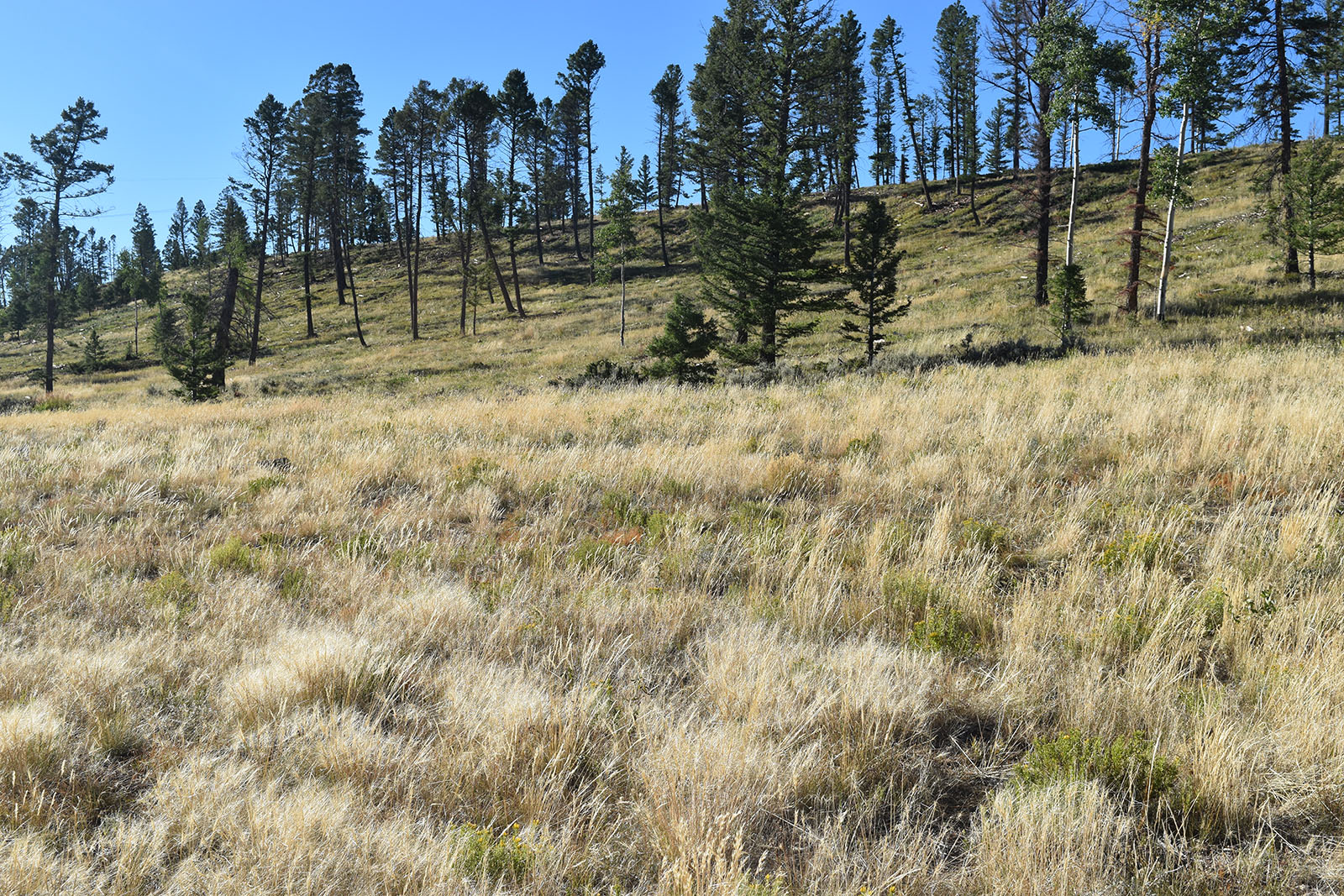A new scientific report demonstrates that wildfire mitigation and forest health treatments like those underway in Chaffee County will adversely affect forest health and contribute to an “increase in size and frequency” of wildfires.
The report, “Cheatgrass Invasions: History, Causes, Consequences, and Solutions,” states, “Cheatgrass is one of the most significant ecological crises facing land managers in the arid West. … As cheatgrass increases, it fuels larger and more frequent fires.”
For wildfire mitigation and containment activities, the report recommends avoiding the use of “ground-disturbing equipment,” which “creates a seedbed for cheatgrass.”
Mechanical tree-thinning – funded through Chaffee County taxes and matching funds secured by the Envision Forest Health Council – employs ground-disturbing equipment like masticators, front-end loaders and tractor-trailer rigs.
These local “forest-health treatments” not only invite cheatgrass infestation, but the machinery used can introduce cheatgrass seeds, according to the report. Thinning trees also removes tree canopy, which provides more sunlight on the ground, further supporting the spread of cheatgrass.

Multiple scientific studies cited in the new report demonstrate that “cheatgrass invasion creates larger and more frequent fires by creating continuity of fine fuels. … The costs and difficulties of combating both further cheatgrass expansion or retention – and minimizing the frequent fires that result – are high from both the ecological and the economic perspectives.”
According to the report, the threshold for avoiding the ecological and economic consequences of cheatgrass infestation is between 5% and 25% of land area.
While Chaffee County remains below that threshold, cheatgrass is spreading, which is increasing wildfire risk, and that spread is being encouraged by ongoing “wildfire mitigation” projects. These projects target “5 to 10% of the Chaffee County Landscape,” according the Chaffee County Wildfire Protection Plan.
Kim Marquis, program director of Envision Chaffee County, recently said $33 million has already been spent on tree-thinning, and the total projected cost is $65 million, an increase of $15-20 million from original estimates.
Yet these tree-thinning projects don’t address highly combustible fine fuels like cheatgrass, even though the risk is well-documented by the Colorado State University Extension and multiple sources cited in the new report.
Even the Boy Scouts know about fine fuels, which they refer to as tinder: “Thin, dry material that ignites instantly with a match. It’s the basis of every fire. Examples include dead, dry grasses … .”
The spring crop of cheatgrass dies off by early summer, leaving “the basis of every fire” available for easy ignition at the height of fire season.
The report repeatedly cites scientific studies that identify prevention of ground disturbance as the best way to limit the spread of cheatgrass.
Native groundcover in our arid, high-elevation climate consists of a “biological soil crust” (lichens and mosses) and “perennial bunchgrasses,” which are more resistant to ignition than cheatgrass.
The combination of biocrust and bunchgrasses also creates a synergy that resists cheatgrass invasion. Soil-disturbing machinery destroys the biocrust and damages native grasses, inviting cheatgrass infestation; then, cheatgrass outcompetes native bunchgrasses.
Soil disturbance also destroys the soil’s symbiotic fungal network, which supports native plant species, including trees, and it can take up to a decade for these fungi – i.e., mycorrhizae – to recover from mechanical disturbance.
Mycorrhizae support native plant species by enhancing nutrient uptake, but cheatgrass can thrive without the fungi.
Cheatgrass also expands rapidly “because it is a prolific seed producer, can germinate in spring and autumn giving it a competitive advantage over native grasses, is tolerant of grazing, and increases with fires,” according to a 1996 study cited in the report.
Other studies show that cheatgrass “can outcompete native grasses for water and nutrients because it is already actively growing when native plants are initiating growth.”
Cheatgrass “ultimately drains soils of available nitrogen, which helps cheatgrass exclude native grasses” and exhausts soil nutrients needed by native plants.
The science also shows that cheatgrass “depletes soil water in spring much more rapidly than native species,” preventing the survival of native seedlings and subjecting adult native plants to moisture stress.
So, the destruction of soil fungi by mechanical tree-thinning adversely affects forest health and encourages the spread of cheatgrass. Then, depletion of soil nutrients and water by cheatgrass further degrades forest health, and the presence of cheatgrass increases the size and frequency of wildfires.
For these and other reasons, minimizing cheatgrass infestations and restoring infested lands to natural conditions should be “a priority dictating the outcomes of land-use and land management decisions throughout the arid West,” according to the new report.
But as Marquis recently said, the Forest Health Council “will not entertain debates” about the Chaffee County Community Wildfire Protection Plan’s goal of cutting trees on 30,000 acres, which ignores the multifaceted forest-health and wildfire issues associated with cheatgrass.

“Cheatgrass Invasions: History, Causes, Consequences, and Solutions” was published by the Western Watershed Project and authored by Erik M. Molvar, Roger Rosentreter, Don Mansfield and Greta M. Anderson.
*According to the first-ever inventory of mature and old-growth forests on public lands, completed in 2023.








